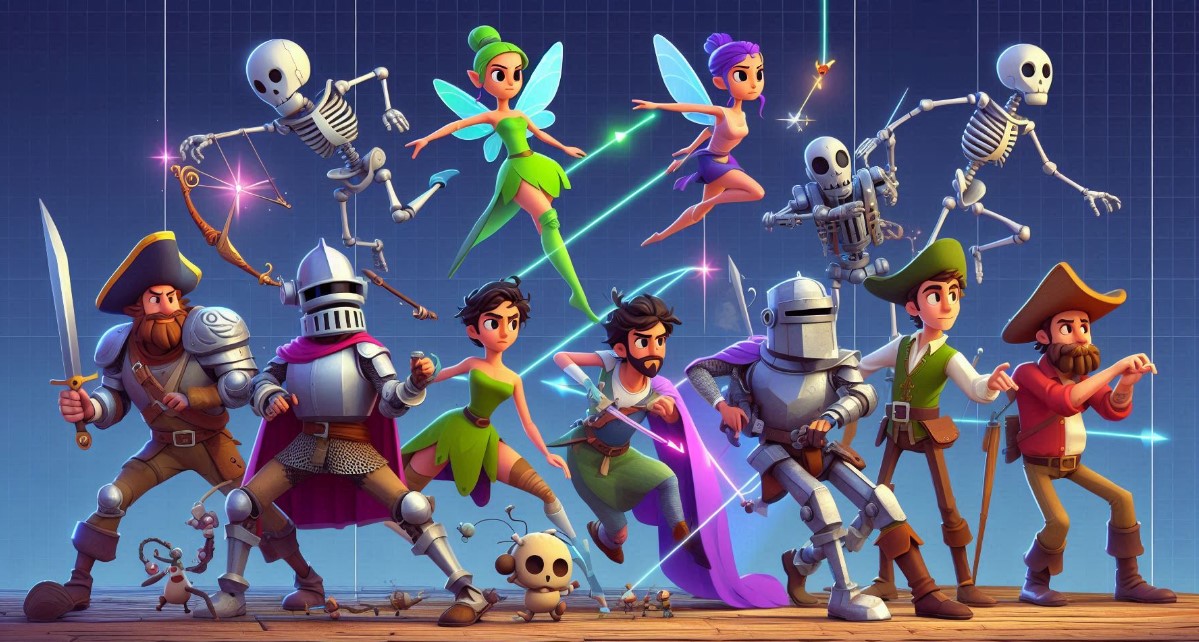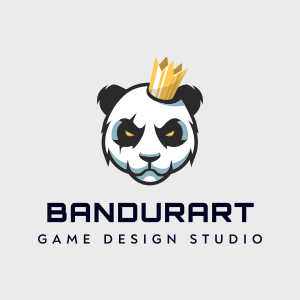Why Do You Need to Know About Arc Animation Principles?
Arc animation is one of the key tools every aspiring game developer should know. If ever there was an animated character doing something and you were like, “Oh, that feels so real, ” you probably saw the magic of arcs. A new hot topic the BandurArt team wants to tell you about.
Arcs in animation are the curving paths almost everything in real life traces – from a character’s reaching arm to a sword swinging in an intense fight. Unlike straight lines, arcs make the natural movement look smooth and believable. If you don’t use the arcs, then the movements of the animated character or object will be stiff and unnatural.
If you want to get a simple arc animation definition, then think about character jumping. They don’t just go straight up and down like some sort of robotic move. The main idea is to make the object or character move as naturally as possible. It can be a sword swing or a character who waves “hello”. These arcs add weight and life to any new animation. The character or object becomes more “alive” and integrated into a virtual world created in video games.
Knowing the skill of arc animation is important to any game developer and 3D animator. Such a technique can add a cool factor to any game. The character’s or object’s movement is getting more natural and responsive. For example, the well-animated arc may show where an object will go – whether it be an axe in a swing or when a character leaps over a chasm. The gameplay becomes much smoother and more immersive.
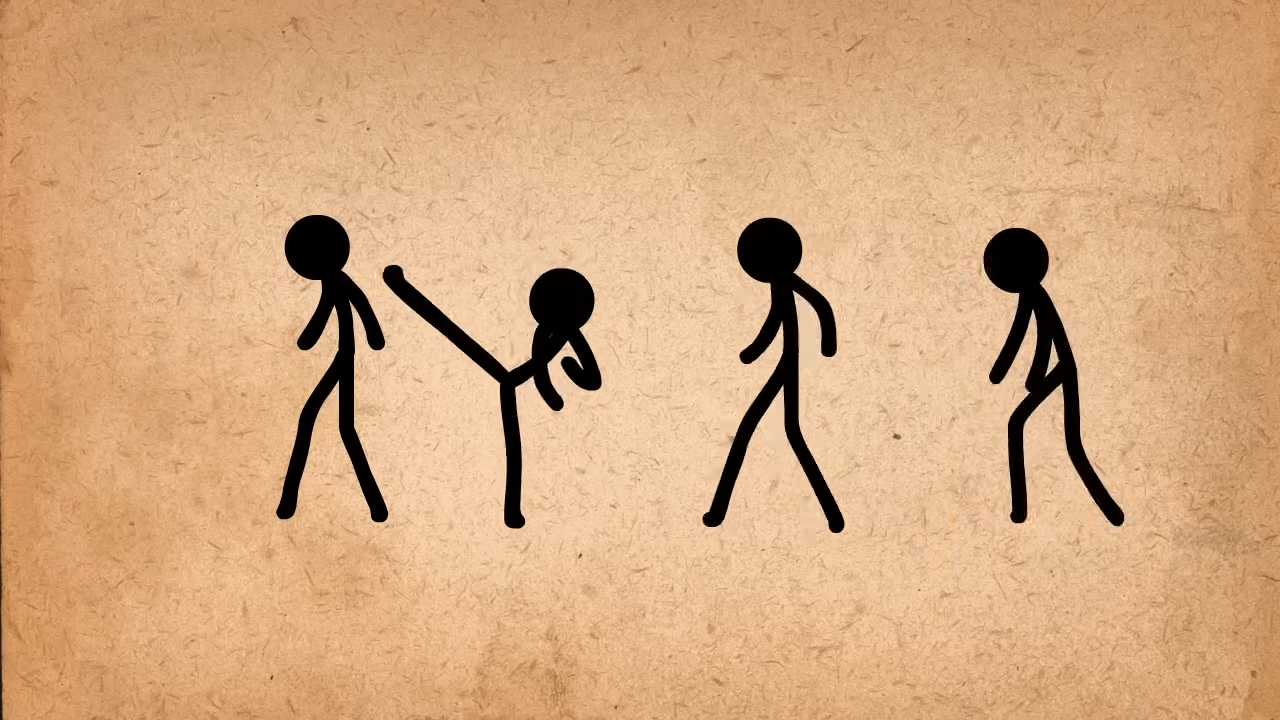
Arc is like the secret sauce that makes average animations memorable and fun. Embrace the arcs – watch your characters come to life on screen.
What is Arc in Animation?
Arc in animation is basically the path of a 3D object’s or character’s movement. Visualize a bouncing ball, the swing of a character’s arm, or even the tiny tilt of a head. These movements are not a perfectly straight line. In real life, these movements have a curving path – an “arc”.
When you are animating a character or object, you want the actions/movements of the character to feel and look smooth and lifelike. Arcs help with that. Due to its natural curve, movements mirror how the objects would act out in real life because of gravity, inertia, and force. Following the principle of arc animation will make everything smoother, more appealing, and more realistic.
Think of it this way: when a character turns the head, from left to right, it merely rotates. The head will dip slightly and follow along a curvature for it to look natural. If it moved in an absolutely straight line, the character would look awkward and robotic.
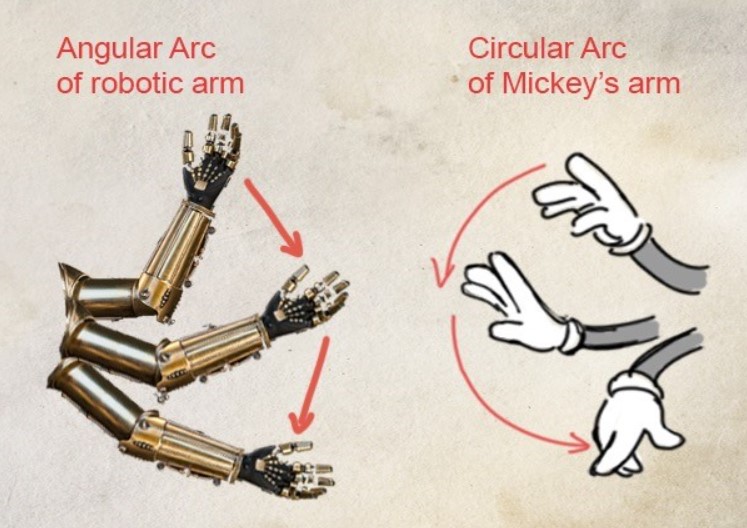
The following video explains better the arc animations and how they have to be implemented.
12 Principles in Animation – for Game Developers and 3D Animators
The 12 principles of animation are like the “holy grail” for anyone who intends to create believable and engaging animations. Created by Disney animators Frank Thomas and Ollie Johnston in their book “The Illusion of Life”, these principles have changed the approach to traditional 2D animation. They remain factual for game developers and 3D animators nowadays as well.
These 12 principles include:
- Squash and Stretch. It’s all about weight and flexibility within your characters. The best example would be a ball that bounces: it will squash when it hits the ground, then stretch when flying up;
- Anticipation. Before any big action, there is a windup. There, the fighter doesn’t just throw the punch; he pulls back first;
- Staging. Think of it like framing your scene for the player. It’s about focusing attention on what is important – whether an enemy is about to strike or an important item to collect. The clearer your staging is, the better the experience for a player;
- Straight Ahead Action and Pose-to-Pose. Straight ahead action helps create dynamic, unpredictable motion, while pose-to-pose is for achieving planned, precise movements;
- Follow Through and Overlapping Action. A character doesn’t come to rest all at once. The hair, the clothes, and even the limbs keep moving a little. That’s what gives them the feeling of following real physics and adds depth and weight to their animations;
- Slow In and Slow Out. A movement seldom starts or comes to an abrupt stop. Acceleration and deceleration are usually slow. The purpose of this principle is to prevent jerky motions;
- Arcs. As we said, an arc animation principle is the path an object or character takes through space. The imaginary line describes or defines the movement or action taking place. Every natural movement follows a curved path. Straight lines are for the robots only. Arcs add grace, flow, and realism whether the character is jumping or swinging;
- Secondary Action. This action happens simultaneously with the primary action. The waving character may also have a little bounce to the character’s step and/or a facial expression that adds emotion to the scene. These little gestures make a difference and create depth with the characters;
- Timing. A slow, contemplative step versus a quick dash – what to choose. Timing appeals to mood, weight, and personality. Nail the timing, and you’ll make your animations more engaging;
- Exaggeration. Sometimes, going overboard makes things feel more realistic. Exaggerate main movements for more drama to make them pop, such as a very long jump or comically wide smile;
- Solid Drawing. A 3D animator should understand the principles of the form and volume. Your characters should have weight and balance – they need to not feel flat, even within a virtual 3D environment;
- Appeal. Characters should be interesting. Heroes or villains, quirky NPCs – all of them have to catch the gamer’s interest. This should be supported with good design, clear silhouette, and personality going across;
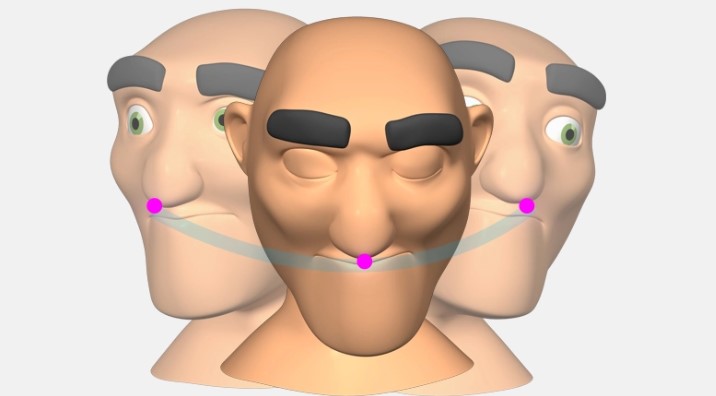
The principles of animation help to deliver smooth, interesting, and believable animations that will engage your player deeper in the game.
Types of Arcs in Animation
Arcs in animation can have various shapes and types with different purposes to bring your character or object to life. Let’s check the main arc animation types.
Standard Arcs
These arcs are the most common. Following a perfectly circular path, this arc animation type is ideal for actions such as rotations and pendulum swings. The usage of a circular arc in movement makes it look natural and fluid. Such arcs are often used for the motion of the characters’ limbs, like swinging an arm or kicking a ball. They give your animation that finished “organic” feel.
Elliptical Arcs
An oval-shaped arc makes the movement more dynamic and asymmetric. The speed of the movement is increased during the middle part, while it slows down at the end. This arc animation is often used for jumps or any such motion when there is acceleration and deceleration, like when throwing an object.
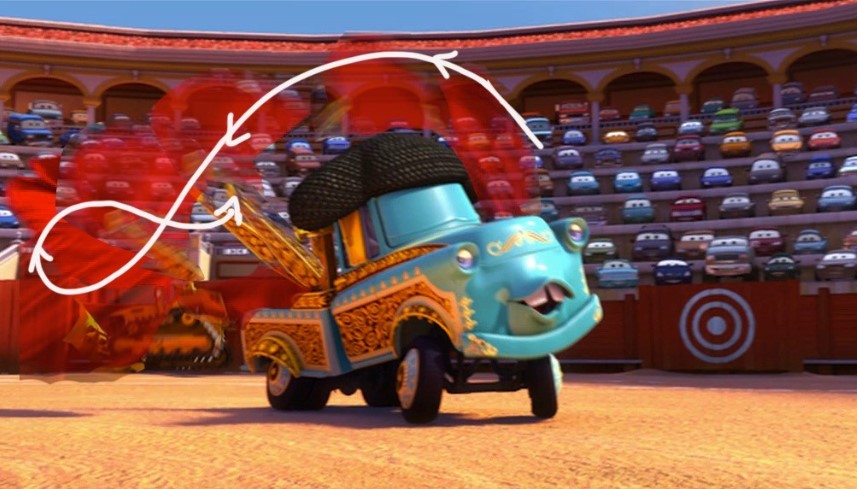
Irregular Arcs
These arc animation examples are loose, irregular paths that don’t conform to a specific geometric shape. An irregular arc is perfect for actions that are unpredictable or chaotic. For example, the leaves blown in the wind, a fluttering cape, or the character stumbling. Such arcs add a sense of unpredictability, making your animation more realistic.
A professional 3D animator should know and implement all these types of arc in animation.
Uses of Arc Animation in Video Games
Arc animation plays an important role in video games. Using arcs makes sure the motion will not look robotic, but more believable, helping the player to immerse into the virtual world faster:
- Combat Actions. Arcs can be also used for combat actions in most fighting games. A character performing a sword swing or a punch does so in an arc. The appliance of the arc makes the action look powerful and dynamic. It adds a lot of satisfying impact to the combat, making the attacks easier to read and much more fun to deal with;
- Jumping Mechanics. Characters in platformers typically jump with an arc. The arcs make the jumps more realistic. It also helps the gamer better understand where the character will land, adding some precision to the game without frustration;
- Weight and Impact in Character. Arcs tend to inform a character’s weight and mass. A larger character should have broader arcs to emphasize the bulk figure, while a smaller character might have quicker, tighter arcs to give the impression of lightness. Such variations in movement make each character unique and give them personality;
- Environmental Reactions. Arcs can also be done through environmental reactions. For example, a person dodging around something coming at him or being hit by an enemy. Broken or exaggerated arcs emphasize quick changes – like when a character is knocked back;
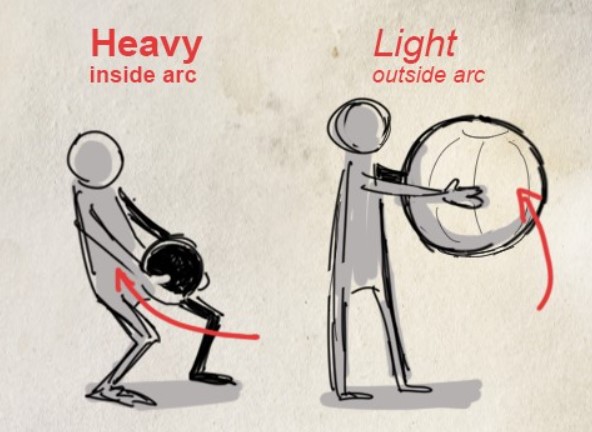
Arc Animation Example in Video Games
The arc principle of animation is applied everywhere in video games nowadays. However, some experienced animation studios with skilled experts and huge budgets really create masterpieces using this principle. If you want something to inspire when working on the project with arc animation, check out these amazing video game examples.
- Super Mario Odyssey
Mario’s jumps are iconic. And in Super Mario Odyssey, this classic arc animation was perfected. Every leap, somersault, and bounce follows a natural curve that gives precision and a lot of satisfaction during platforming. The arcs allow you to predict points of landing and make your movements funnier.
- The Legend of Zelda: Breath of the Wild
Every action Link makes in Breath of the Wild, such as climbing, swinging with weaponry, and firing arrows, is based on the precision arcs. Take, for instance, Link’s swinging of sword – the arc animation adds weight to every swing. The paraglider also moves along in gentle arcs, adding a sense of realism and a feeling of freedom as players glide around the game’s world.
- Street Fighter V
Arc animations are important features in fighting games, such as Street Fighter V. Most of the characters’ attacks, especially wide kicks and spinning punches, have smooth arcs. These moves are readable and easy to react to. The game looks better visually and “feels” heavier to engage in combat.
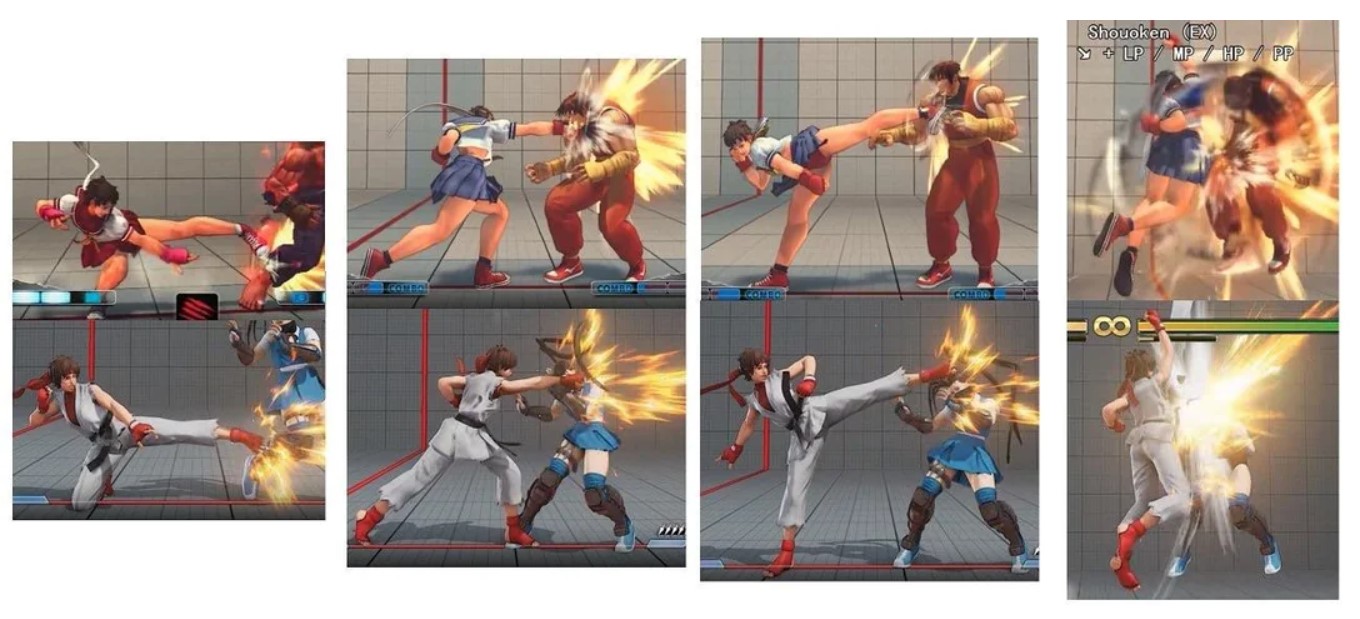
- God of War Reboot
Kratos’ Leviathan Axe is a perfect example of arc animation. When you throw the axe, it traces a quite typical arc and feels weighty. The arc becomes more spectacular during the axe’s return, when it gives a player a visual cue for catching.
- Spider-Man (2018)
The arcs are used for web-swinging in Marvel’s Spider-Man. Spider-Man’s swings trace the exaggerated arcs. The player gets a better sensation of momentum and speed each swing takes. It makes flying around New York City quite natural for PlayStation players.
We recommend you read more about the best examples of arc animation in AAA video games on Reddit.
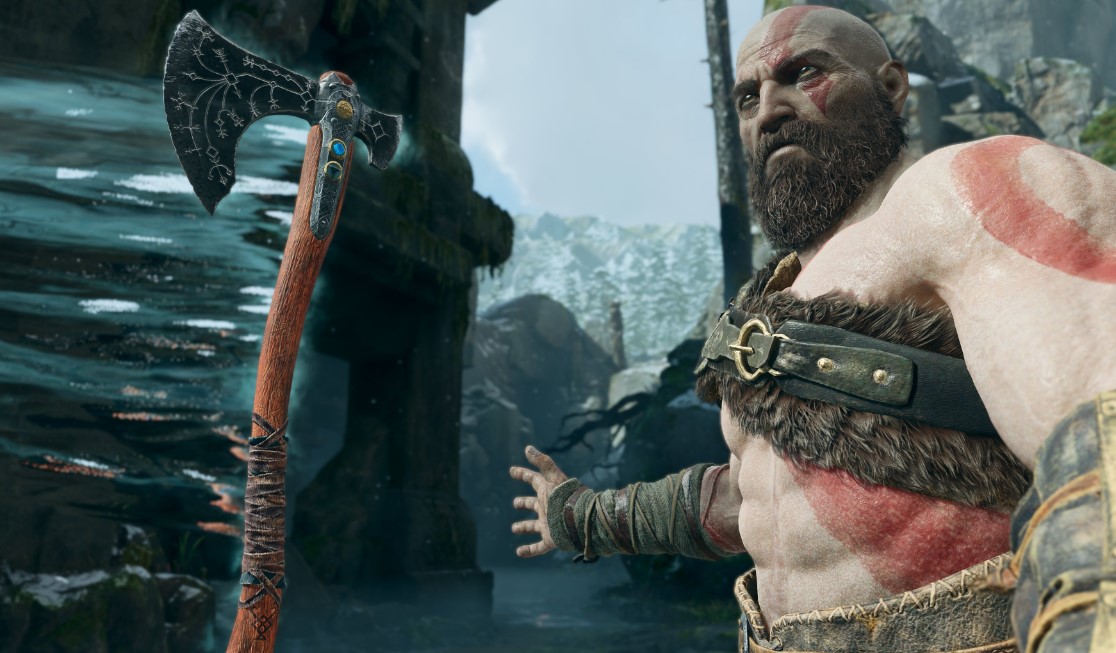
Tips on How to Use the Arc Animation for Aspiring Developers
If you’re one of those aspiring to be a game developer, then knowing the technique of arc animation is the key to making your characters move more naturally.
These are the tips for beginners if you want to become more proficient in arc animation skills:
- Observe Real Life. Watch how people/animals walk, how objects fall, and how animals jump. Every movement uses arcs. Observing these natural curves will help you create authentic animations;
- Draw Arcs Before Animation. Before working on the main animation, draw the arcs on paper or your digital storyboard. It allows you to visualize the path of motion and ensures your character or object follows through it naturally;
- Visualize Arcs in 3D. Think of arcs within a 3D space, not just 2D. For example, if your character is swinging a sword, previsualize the arc from all angles above, below, and from the side. You can keep such movement consistent and believable;
- Use Professional Software Tools. Of course, in any animation software such as Autodesk Maya or Blender, you’ll often find an arc-tracking tool. These tools help you to see if your movement is too stiff and you can change the path for a smoother curve;
Remember, arcs are not used to make movements pretty – it’s what can give your animation a realistic factor. Just practice more, and you’ll soon see the difference that arcs in animation can bring!
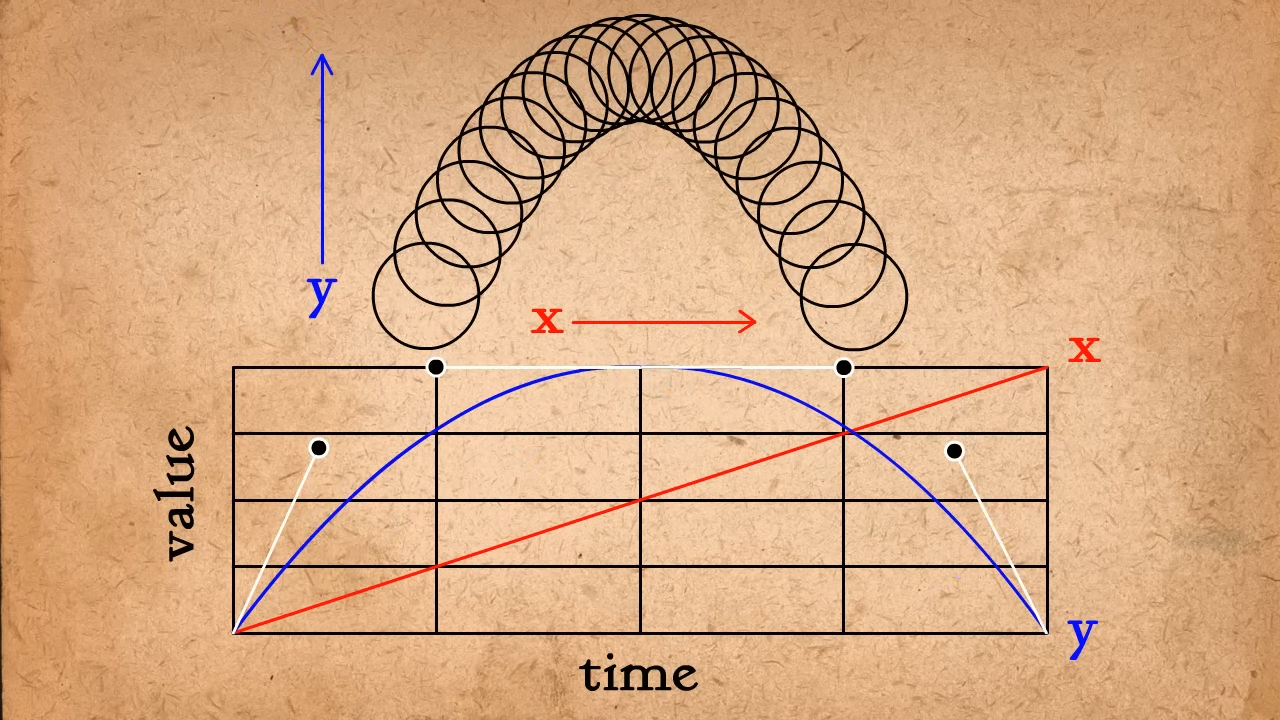
Frequently Asked Questions
How do arcs affect the movement of a character in a video game?
Arcs give a smooth flow to the movement of characters. For example, when a character is swinging a weapon or jumping, the movement describes an arc that provides the feel of reality. This will make it easier for the player to trace the motion and time the proper action to complement such movement. Arcs also suggest the weight and momentum of the character’s actions.
Which instruments can I use to create an arc animation in my game?
The professional animation software – Maya, Blender, or Unity – allows you to visualize and create arc animations with built-in tools. The arcs you make with these tools show that your character or object follows a natural path.
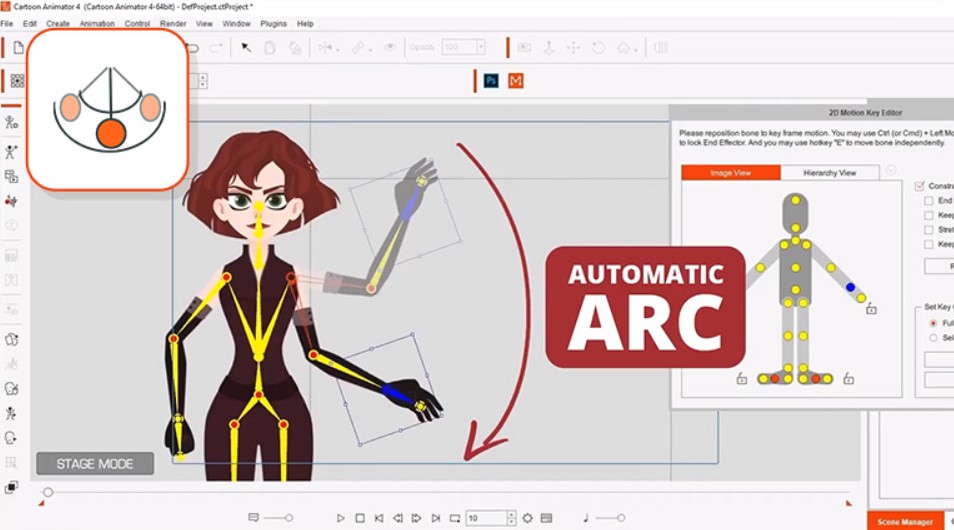
Do arcs only apply to character animations?
Arc animation principles are much more than just the character’s movement sets. Anything that moves will use an arc principle – falling objects, swaying trees, and projectiles like arrows or grenades. Using arcs with these elements would maintain cohesion and make the game world movements more realistic for better immersion.
Conclusion
Hopefully, this guide from the BandurArt team will help you to become a 3D animator. This knowledge about arc animation can get you a professional-grade level of skills and maybe even land a job offer. Make sure to read our blog where we give many advice for aspiring game animators. Also, we are open to collaboration if you want to create a video game with our professional experts. Let’s create interesting games with smart arc animation together!

